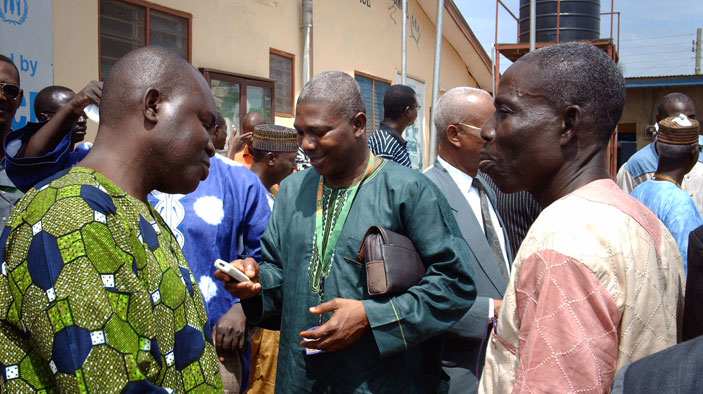Africa—Conflict Prevention, Mitigation, and Response Programs in East and Southern Africa (CPMR-ESA)
Client: U.S. Agency for International Development
Duration: 2003-2007
Region: Sub-Saharan Africa
Country: Regional
Solutions: Fragile States
Ethnic conflict, weak economies, health crises, and fragile governments dramatically hinder sustainable economic and political development in Africa’s Horn and Great Lakes regions. Although a wave of democratic transitions in Southern Africa has helped decrease the likelihood of large-scale civil war and cross-border conflict, the use or threat of violence as a political strategy continues, especially prior to elections. The region remains vulnerable due to interrelated, root causes of conflict—including health, demographic, social, environmental, economic, and political factors. CPMR-ESA supported implementation of the conflict prevention, mitigation, and response programs of the U.S. Agency for International Development (USAID)/East Africa office in Nairobi, Kenya, and the USAID/Southern Africa office in Gaborone, Botswana. The USAID/East Africa-funded Peace in East and Central Africa (PEACE) component focused primarily on addressing cross-border conflict issues affecting local and regional peace and stability in the Horn of Africa, with emphasis on border areas of the pastoralist arc that includes parts of Kenya, Uganda, Sudan, Somalia, and Ethiopia. PEACE activities included support for localized peace-building efforts through civil society and community-based organizations as well as coordination with regional organizations such as the Intergovernmental Authority on Development Conflict Early Warning and Response Mechanism. Other components of the East Africa program included support for Somalia reconciliation and a regional anticorruption program to increase transparency and reduce opportunities for corruption in the East African regional freight forwarding and clearing sector. In Southern Africa, the programmatic focus has been on preventing, managing, and mitigating potential conflict resulting from political competition.

Sample Activities
- Strengthen the capacity of African organizations to understand, manage, and respond to actual and potential sources of conflict.
- Provide long- and short-term technical assistance in conflict-related areas such as conflict vulnerability assessments, conflict-sensitive programming, and conflict monitoring and reporting.
- Train stakeholders on conflict management and mitigation.
- Provide direct grants and grant management support for nongovernmental implementing partners.
- Provide institutional capacity building and other direct support for government and nongovernmental partners; information and communication technology assistance; knowledge management; and project monitoring, evaluation, and impact assessment.
Select Results
- Local peace accords and operational agreements were negotiated and signed between cross-border communities to end open conflicts, providing mutually agreed-upon bases for managing and utilizing natural resources vital to pastoralists’ livelihoods.
- Established equitable system for adjudicating disputes and enforcing punishment of violations.
- Increased civil society and community participation in the reconciliation process in Somalia.
- Increased transparency and efficiency of the East Africa regional freight forwarding and clearing system.
- Reduced loss of government revenue, improved trade and investment competitiveness in the region; reduced the spread of HIV among transporters forced to spend idle nights at border-towns, reduced delays in the delivery of relief consignments, and reduced opportunities for smuggling of drugs and terrorist weapons.
RELATED CONTENT:
Regional—Strengthening Regional Peace and Stability in West Africa Program (SRPS)
The Strengthening Regional Peace and Stability in West Africa program builds the capacity and commitment of USAID’s regional and bilateral partners to prevent conflict and address governance weaknesses with the aim of reducing countries’ fragility.
Read More